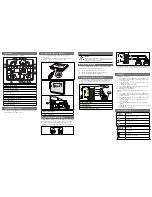
Wireless devices can communicate via 6 different
frequency channels.
During system commissioning the installer can
assess which channel has the lowest noise and
interference level and program the wireless system
to operate on that channel. This will significantly
improve communication between different wireless
devices in the system (as opposed to choosing a
random frequency channel that may not have the
ideal conditions for communication).
The wireless system can be characterized by the
amount of traffic in the network. The more devices
you have, the higher the traffic will be.
It is recommended to keep the traffic value under
10%. One frequency channel can accommodate
around 2000 devices.
A translator and the wireless devices connected to it,
make up an “independent” wireless system. If the
fire control panel has several translators connected
to it, then it would be possible that some of them will
use the same frequency channel. Every wireless
network is assigned a unique system code, which
prevents communication conflicts between different
wireless systems in the above condition.
Refer to and follow national codes of wiring and
cabling practice and other internationally recognized
standards.
Loop terminals are polarity sensitive, so connect
them adequately according to the following
instructions.
It's recommended not to install more than 10 EK‐
WL8‐TRV in a single loop.
If 10 translators are connected to a single loop, the
resistance in the loop should not exceed 16 Ohm
Frequency Channels and Traffic
Connecting the Translator





























